Explore the History and Beauty of Ajloun Castle
If you plan a trip to Jordan, add Ajloun Castle to your itinerary. This ancient fortress, located just a short distance from the capital city of Amman, tells a story of the region's complex and fascinating history. Built to defend the area against crusader attacks, Ajloun Castle played a significant and strategic role in controlling the Jordan Valley and protecting valuable resources. Today, visitors can explore the castle, admire its Islamic Ayyubid military architecture, and learn about its transition from a military stronghold to an administrative centre. Don't miss the chance to discover the history and beauty of Ajloun Castle during your Jordanian adventure.
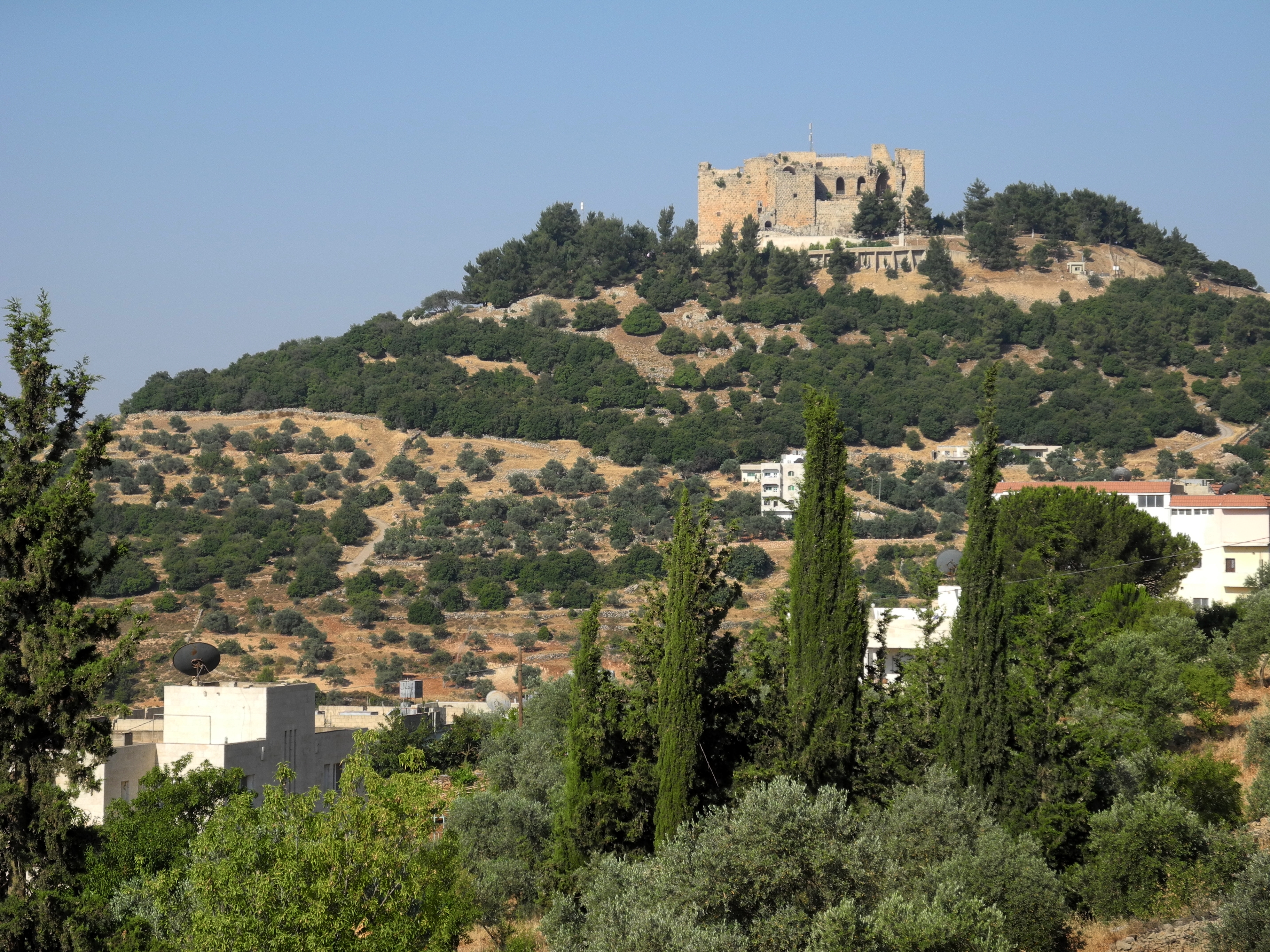
The historical significance of Jordan
Jordan is a country steeped in rich history and culture. Its strategic location at the crossroads of Asia, Africa, and Europe has made it a crucial hub for trade and commerce since ancient times. The country's history can be traced back to the times of the Bible, with its numerous references to the region.
According to historical accounts, Jordan played a vital role in the emergence of three world's major religions: Judaism, Christianity, and Islam. The region was also home to numerous empires, including the Persians, Greeks, Romans, Byzantines, and eventually, the Ottoman Turks.
For centuries, Jordan was a melting pot of cultures and civilizations. It was an important centre for learning and trade, attracting scholars, merchants, and travellers worldwide. The country's abundant water and fertile land made it a major agricultural hub, while its strategic location on travel and trade routes brought immense wealth to the region.
Today, Jordan is renowned for its historical and cultural attractions, including ancient ruins, castles, and religious sites. Visitors can explore the UNESCO World Heritage Site of Petra, one of the world's most iconic archaeological sites, or visit the ancient Roman city of Jerash.
As the country's golden age was during the Ayyubid (1171-1250 AD) and Mamluk (1250-1517 AD) periods, Jordan has numerous historical sites that showcase the excellence of Islamic military architecture, including Ajloun Castle. This fortress was built to protect the region against Crusader attacks during those times, and tourists can explore its numerous towers and battlements.
Jordan has a rich and diverse history, which can be experienced by those who visit. The country's strategic location and wealth of resources made it an important hub for trade and culture, while its history has left behind numerous iconic sites that remind the region's vibrant past. [1][2]
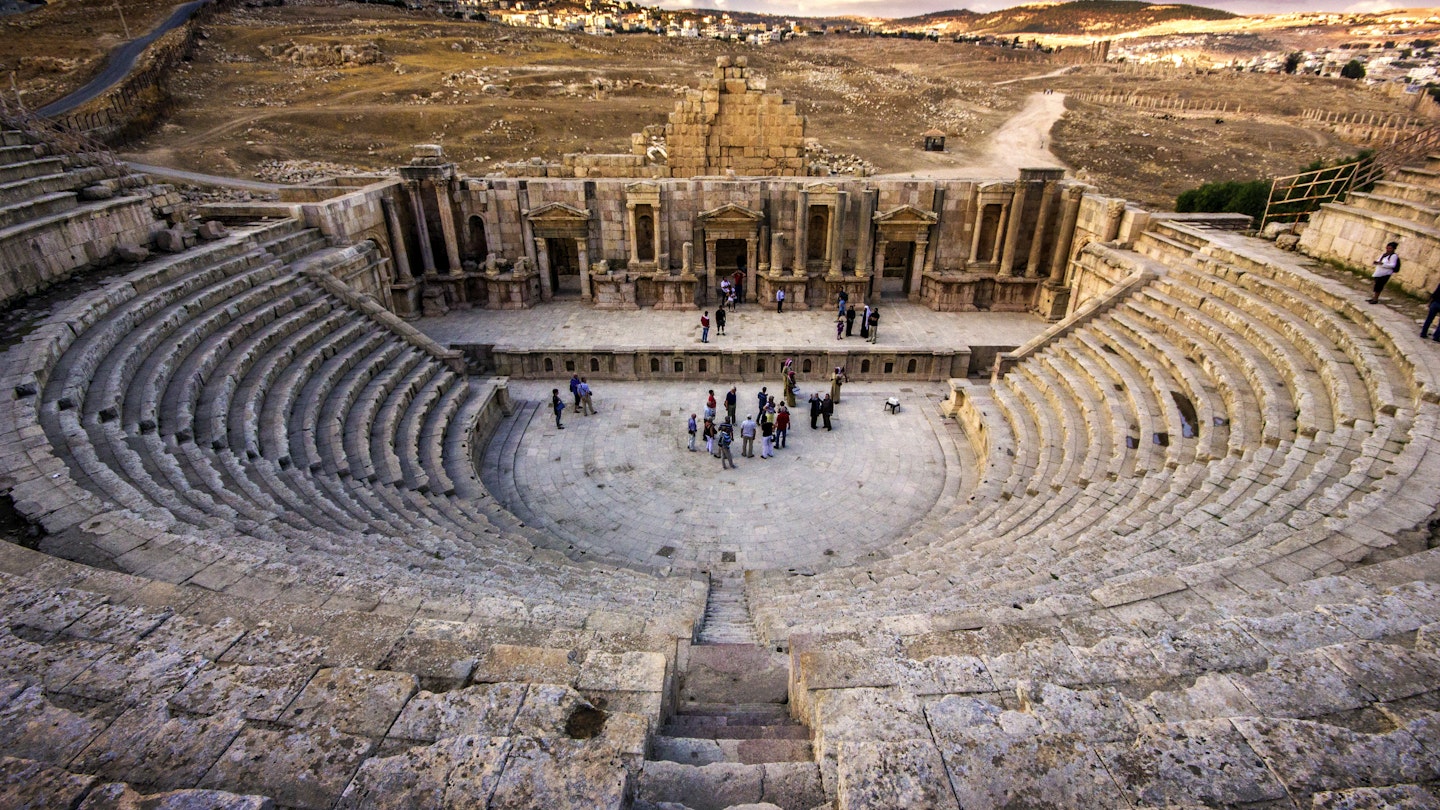
Popular tourist Attractions in Jordan
Jordan has a rich history and cultural heritage, attracting millions of tourists annually. The country boasts numerous tourist attractions catering to all ages and interests. Here are some of the popular tourist attractions in Jordan that you must not miss out on during your visit:
- Petra: One of the most famous tourist sites in Jordan and a UNESCO World Heritage Site, Petra is an ancient city carved out of rock. Visitors can explore the famous Treasury, the Monastery, and other impressive structures that date back to the 1st century AD.
- Wadi Rum: A popular destination for adventure seekers and nature lovers, it is a vast desert valley famous for its stunning rock formations and rugged landscape. Visitors can explore the area on a jeep tour or opt for a more adventurous experience by hiking or rock climbing.
- Dead Sea: The lowest point on Earth, the Dead Sea is famous for its therapeutic properties and is a popular destination for wellness and relaxation. Visitors can float in the salty waters and indulge in mud or spa treatments.
- Jerash: An ancient Roman city that dates back to the 1st century AD, Jerash is a well-preserved site that offers visitors a glimpse into the past. Visitors can explore the impressive amphitheatre, the Temple of Artemis, and other existing structures.
- Aqaba: A picturesque coastal town on the Red Sea, Aqaba is a popular destination for beach lovers and water sports enthusiasts. Visitors can enjoy scuba diving, snorkelling, and other water activities or relax on the beautiful beaches.
As a travel destination, Jordan offers something for everyone, from history buffs to adventure seekers to beach lovers. So, plan your trip to Jordan and explore its amazing tourist attractions! [3][4]

Ajloun Castle is a key historical site.
Ajloun Castle is a key historical site in Jordan that attracts millions of visitors annually. Built by the Islamic Ayyubids in the 12th century, it is a magnificent example of military architecture. Over the years, the castle has been expanded, renovated, and used for different purposes. Here are some key features of Ajloun Castle:
- Defending against Crusaders: Ajloun Castle was strategically located to prevent or contain the Crusaders' progress. It played a significant role in protecting the Jordan Valley and important communication routes.
- Dominating Jordan Valley and important communication routes: From its location in Jabal Auf, the castle could control traffic along the road connecting Damascus and Egypt, dominating a wide stretch of the northern Valley.
- Protecting key resources in the area: Another major objective of the fortress was to protect the development and control of the iron mines of Ajloun.
- Administrative centre for Mamluk rulers: After more than 100 years, Ajloun Castle became an administrative centre for the governor of Mamluk, Yousef ibn Ayoub. Later, it ended up in the hands of the King of Aleppo and Damascus.
Ajloun Castle has a complex past making it a fascinating site to visit. It has gone through different stages of development, from a military stronghold to administrative quarters and back to a military stronghold again. Despite earthquakes and other natural disasters, the castle has survived over the centuries and has been restored to its former glory by the Department of Antiquities. It is now a popular tourist attraction that offers a glimpse into Jordan's history and beauty, along with a museum that showcases countless artefacts from different periods. Experienced guides are available on-site or through professional tour operators to enrich the experience. [5][6]

Islamic Ayyubid military architecture
Ajloun Castle is a prime example of extraordinary Islamic Ayyubid military architecture that dates back to the 12th century. The castle was built in stages and expanded by General Izzidin Usama, the nephew of Salhudin Al Ayyoubi, in 1184 AD. The initial structure consisted of a compact nucleus stronghold with four main towers, and two more towers were added soon after. This was followed by further enlargements and additions completed during the reigns of different rulers, including Al Malek AL Adel, Aybak Bin Abdullah, and Al Malek AL Nasser Salhudin Yousef. The expansion stages concluded with the restoration of the western part of the castle by Amir Izzidin Aybak AL Ala’I under the Mamluk Sultan Al Thaher Baybars.
"The castle is a masterpiece of masonry, with a unique blend of architectural forms, techniques, and materials. It reflects a combination of Roman, Byzantine, and Arab styles, with some Crusader influence," says Dr Rida Nazzal, the director of archaeology at Ajloun Castle. The castle features a moat, drawbridge, arrow and slit windows, all providing exceptional defence capabilities. The castle also boasts a commanding position, affording the best views of the Jordan Valley and important communication routes that connect Egypt and Syria.
The strategic location of Ajloun Castle, in relation to travel and trade routes, played a critical role in the region's history. The Ayyubid and Mamluk periods marked Ajloun's golden age, with the city as a centre of religious scholarship and a major commercial and agricultural hub. "The castle was designed to protect the region against Crusader attacks and played a crucial role in defending the key resources in the area," says Nazzal.
Ajloun Castle's unique blend of architectural styles and techniques is a remarkable example of Islamic Ayyubid military architecture. Its strategic location, exceptional defence capabilities, and historical significance make it an essential tourist attraction in Jordan. [7][8]
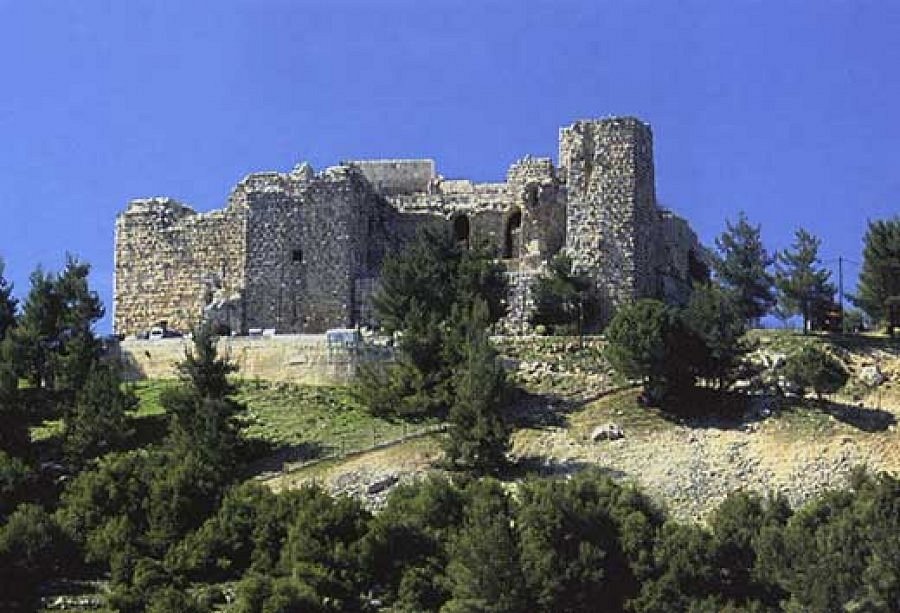
Expansion and renovation stages
Ajloun Castle is one of the greatest examples of Islamic Ayyubid military architecture. The castle underwent several expansion and renovation stages throughout history, making it the imposing fortress it is today. The first stage of construction began in 1184 under General Izzidin Usama, the nephew of Salhudin AL Ayyoubi, who built the compact nucleus stronghold with four main towers on a hill 1100 meters above sea level. Subsequent enlargements followed immediately with two more towers between 1184 and 1193 AD. During the second stage of construction, the castle governor Aybak Bin Abdullah added the seventh tower, which wraps around the southeast corner of the building. The third stage centred on the renewal of the northeast tower when the castle was used as an administrative centre during the reign of AL Malek AL Nasser Salhudin Yousef between 1250 and 1259. The fourth and final stage of construction involved the restoration of the western part of the castle, undertaken by Amir Izzidin Aybak AL Ala’I between 1259 and 1277.
"The castle's size was expanded by constructing new sections and adding towers and fortifications to protect its inhabitants better. These expansions were carried out to defend Ajloun against potential invaders effectively and to assert the dominance and power of the ruling dynasty," says an article from Trip Advisor. The castle became more than just a military stronghold - it served as an administrative centre for the Mamluk rulers. It's magnificent architectural design and strategic location symbolised the region's wealth, power, and culture. Visitors to the castle today can witness the unique blend of Islamic Ayyubid military architecture, ancient history, and cultural heritage that makes Ajloun Castle a key historical site in Jordan. [9][10]

Features of the castle
Ajloun Castle is an impressive fortress with a rich history and unique features, making it a must-visit destination for tourists in Jordan. Here are some of the highlights of this awe-inspiring site:
- As a prime example of Islamic Ayyubid military architecture, Ajloun Castle features a variety of defensive structures, such as moats, drawbridges, and towers, that were strategically designed to withstand attacks from crusaders and other foes.
- Over the years, the castle's expansion and renovation stages have left their mark on its appearance and layout. In the 13th century, for instance, the castle was enlarged by Aibak ibn Abdullah, who built a new tower and gate. At the same time, Sultan Baibars renovated the castle and cleared the surrounding area following the Mongol invasion.
- Some of the most striking features of Ajloun Castle include its thick walls, arrow slits, and double gate. The castle has four corner towers connected by walls and a strong gate system that ensures maximum security and protection.
- Ajloun Castle's location on Mount 'Auf, also known as Jabal Auf, allows visitors to enjoy breathtaking views of Jordan's stunning landscape and natural beauty.
- The castle holds significant historical value as it played a crucial role in defending Jordan against crusaders and protecting key resources. As such, it served as an administrative centre for Mamluk rulers, highlighting its importance as a strategic location.
Ajloun Castle is a testament to the ingenuity and skill of its builders and a reminder of the region's turbulent history. With its remarkable features and historical significance, visiting this castle is an unforgettable experience that captures the essence of Jordan's rich cultural heritage. [11][12]
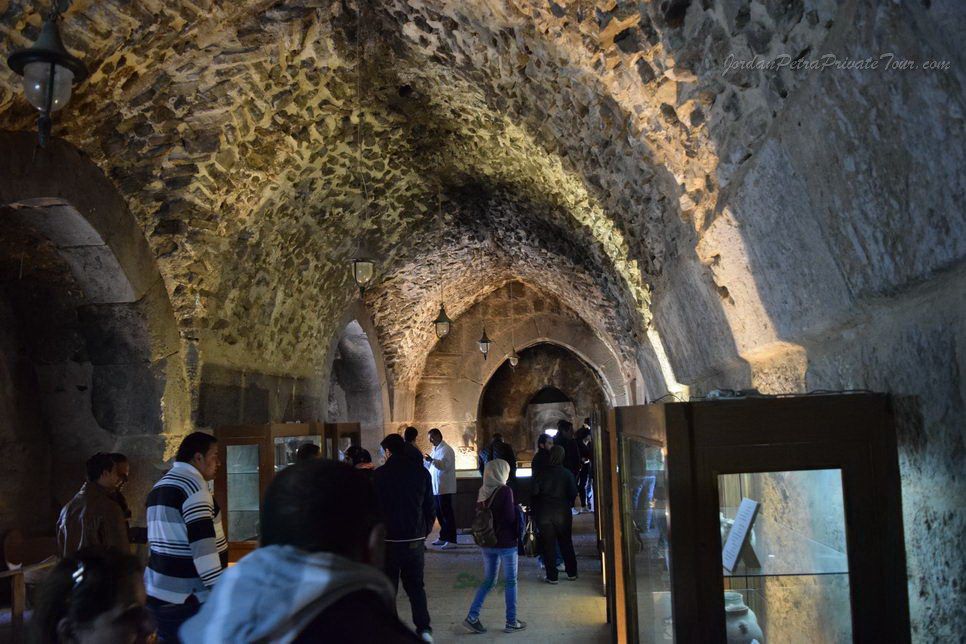
Defending against Crusaders
Ajloun Castle was strategically built to defend against Crusaders during the Islamic Ayyubid period. The castle's strong Ayyubid military architecture made it a formidable foe for any invading army. The thick walls, four towering fortresses, and deep moat were a great defence against any enemy. Even after the Franks tried for decades to gain control of the castle, they could not succeed.
As Crumbs on Travel stated, "Ajloun castle is an impressive building which immediately gives the right impression: a place of defence." The castle's location on a hill 1100 meters above sea level gave it a clear view of the surrounding lands, allowing soldiers enough time to prepare for any incoming attacks. The western part of the castle was restored after Mongol attacks during the reign of the Mamluk Sultan AL Thaher Baybars by Amir Izzidin Aybak AL Ala’I between 1259 and 1277, concluding the fourth stage of construction.
During the Ayyubid and Mamluk periods, Ajloun was a centre for religious scholarship and a major commercial and agricultural hub, known for its abundant water and strategic location on travel and trade routes. Such a prime location promoted Salhudin to have his commander and nephew, Izzidin Usama, build a fortress in 1194 AD to protect the region against Crusader attacks.
"The castle was dominating a wide part of the Jordan valley and controlled once three main passages between Syria and Jordan important for trade and communication," notes Crumbs on Travel. The castle's strategic location made it a vital resource for the Ayyubid and Mamluk rulers in the area. Ajloun Castle served as an administrative centre during the reign of AL Malek AL Nasser Salhudin Yousef between 1250 and 1259.
Ajloun Castle played a crucial role in defending against the Crusaders during the Islamic Ayyubid period. Its strong Ayyubid military architecture, location on a hill above sea level, and strategic location on travel and trade routes made it a vital resource for rulers in the region. Today, the castle is a testament to the ingenuity and strength of the Ayyubid and Mamluk dynasties. [13][14]
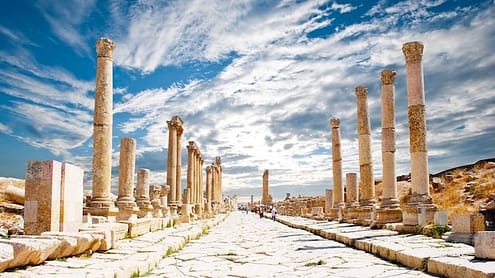
Dominating Jordan Valley and important communication routes
Ajloun Castle is strategically located on top of Jabal Auf, which enabled it to dominate the Jordan Valley and its communication routes. The castle played a crucial role in defending against the Crusaders, who would have approached from the west and south, and in protecting the iron mines of Ajloun.
According to Saladin's historian, the fortress was primarily built to aid the authorities in controlling the Bedouin tribes of Jabal Auf, who allied themselves with the Crusaders. By controlling the three main passages leading to the Jordan Valley, Ajloun Castle could safeguard communication routes between northern and southern Jordan and protect the important resources in the area. It was built in response to the castle of Belvoir, a few miles south of the Jordan Valley, and aimed to prevent the progress of the Latin Kingdom.
The castle's defensive features were well-designed. It had four corner towers connected by walls and a double gate, with arrow slits incorporated into the thick walls. It was surrounded by a deep moat, which averaged 16 meters in width and 12-15 meters in depth. This formidable barrier and its strategic location allowed Ajloun Castle to serve as a military stronghold against the Crusaders.
After over a hundred years, Ajloun Castle was enlarged and converted into an administrative centre for the governor of Mamluk, who then passed it on to the King of Aleppo and Damascus. During the Ottoman period, the castle was used again as a military stronghold, remaining home to a contingent of soldiers.
Ajloun Castle, though not the top tourist attraction in Jordan, is still a significant historical site that should not be missed. It attracts tourists worldwide due to its rich history and convenient location. The restoration work has made most of the castle accessible to visitors, and the museum that houses numerous artefacts relating to the castle's existence is a must-see. Guided tours can also be arranged on-site or through a professional tour operator.
As described by a famous traveller in 1812, Ajloun Castle remains inhabited, now by history buffs and tourists looking to immerse themselves in the rich and complex history of Jordan. [15][16]
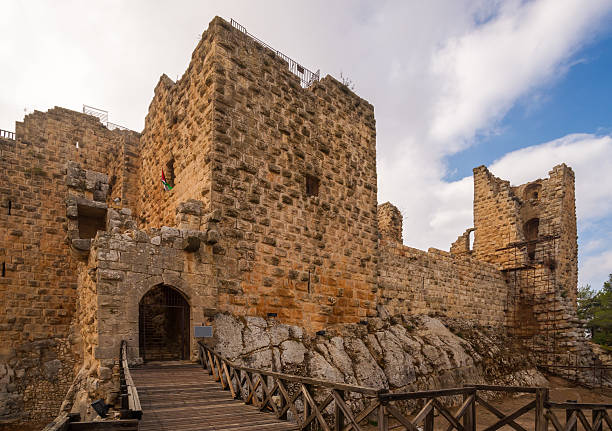
Protecting key resources in the area
Ajloun Castle played a crucial role in protecting the key resources in the area during its time as a military fortress. One of the main resources the castle helped defend was the iron mines of Ajloun. This was particularly important during the Medieval period, as iron was a valuable commodity for weapons and other tools. The castle was strategically located to control the main communication routes between South Jordan and Syria and to guard the three main passages that led to the Jordan Valley.
The castle's design was focused on defence, with arrow slits incorporated into the thick walls and a moat surrounding it. According to Saladin's historian, the fortress was primarily built to help control the Bedouin tribes of the Jabal Auf, who had allied themselves with the Crusaders. The castle was also built in response to the Crusader fortress of Belvoir in the south to contain the Crusaders' progress in the region.
Besides its military function, Ajloun Castle served as an administrative centre during the Mamluk era. The castle was used as a storehouse for crops and provisions, and during the reign of the Mamluk Sultan ad-Dhaher, the castle was restored and cleared of Mongol destruction. Prince Faisal also used the castle during his fight against Ahmad ibn Tarbay in the seventeenth century.
Overall, Ajloun Castle's importance cannot be overstated. It served as a critical military fortress for dominating the Jordan Valley, controlling communication routes and protecting valuable resources, and as a centre for religious scholarship and a major commercial and agricultural hub during the Golden Age of Ajloun. It remains a valuable historical and cultural landmark today. One visitor said, "It's not just a lovely site; you can imagine the history there." [17][18]

Administrative Centre for Mamluk Rulers
During the Mamluk period, Ajloun Castle played a significant role in the region and was also used as an administrative centre for the governor. The castle was expanded and renovated several times during this period to accommodate the region's changing political and military needs. One of the most notable expansions occurred during the reign of Al Malek Al Nasser Salhudin Yousef between 1250 and 1259. The northeastern tower was renewed and used as an administrative centre during this time. This shows how the castle was a military stronghold and a crucial administrative centre for the Mamluk rulers and their subjects.
According to historical records, after the eventual fall of Karak Castle, Ajloun Castle became a larger and more significant centre of governance in the region. The castle came under the control of the King of Aleppo and Damascus, and it also served as an administrative centre for the governor of Mamluk. The fortress changed hands several times over the years and played an essential role in the politics and administration of the region.
Apart from its administrative and military significance, Ajloun Castle has great historical and cultural value. The castle has been restored and is now open to visitors who can explore its various sections and learn about its rich history. The castle's museum is home to numerous artefacts related to different periods throughout the castle's history. Skilled guides can provide tourists with valuable insights and information about the castle's history and its importance in the region's past. A visit to Ajloun Castle provides a unique opportunity to experience Jordan's rich cultural heritage and witness one of the most well-preserved examples of Islamic Ayyubid military architecture. [19][20]
